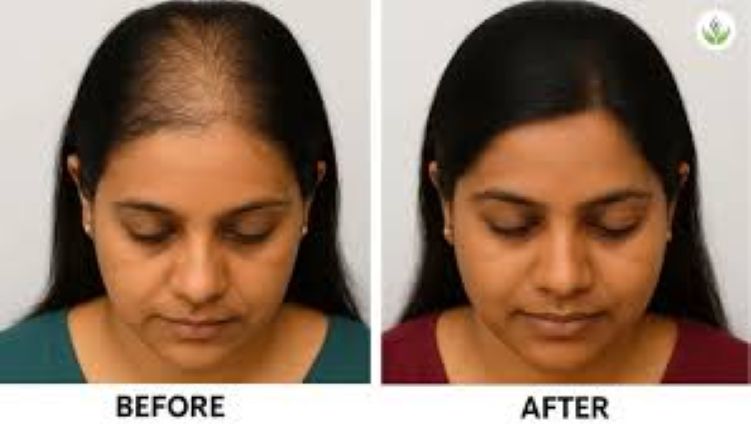Essential Insights on Hair Transplant

Dr. Sanjeev Paria
Over 85% of men and 33% of women will experience hair loss at some point in their life. Globally, some 21 million women and 35 million men experience hair loss. While harrowing, these statistics emphasise the significance of hair transplantation in today’s time. When our hair falls out, new hair grows in to replace it. This is a part of the natural hair cycle. However, when new hair strands do not grow to replace the fallen hair, hair loss becomes a severe condition. Hair loss, more permanent in nature, affects the overall health and quality of the hair. It cannot be fixed with temporary solutions like medications. To treat severe hair loss, we require professional medical intervention that is a permanent and long-lasting solution, such as a hair transplant.
Tackling Myths About Hair Transplant
With advancements in technology, hair transplant techniques have significantly evolved. For instance, the Direct Hair Implantation hair transplant technique utilises a specialised implanter to implant the hair follicles, which gives complete control over angle, depth, direction, design, and density. It is a minimally invasive technique that leaves no scars and has the highest success rate.
However, the hair transplant procedure is surrounded by myths and misconceptions, confusing individuals considering a hair transplant. Many believe a hair transplant is a painful process. In the DHI hair transplant procedure, since hair transplants are carried out under local anesthesia, the patient does not feel any pain.
Some hair transplants may appear odd-looking, but this happens because unprofessional or untrained staff perform the surgeries or procedures performed by technicians or nurses only. The hair transplant procedure, when performed by surgeons, results in the hair blending perfectly with the scalp, producing natural results.
Like any other surgical procedure, a hair transplant also requires recovery time, but most individuals can resume their daily activities after the head wash. Before undergoing a hair transplant, it is imperative to understand the common myths and misconceptions associated with the procedure to make an informed decision.
Key Insights About Hair Transplant
Hair transplants have gained significant popularity as a permanent treatment option for hair loss. During the transplant process, a surgeon extracts hair follicles from a donor site, usually the back of the scalp. This hair is then implanted in the area experiencing baldness or thinning. It is important to understand hair loss, its pattern, and underlying causes before proceeding with any hair restoration methods.
- Are You an Ideal Candidate for the Procedure: It is essential to be familiar with the types of alopecia or hair loss. For instance, the best candidate for the transplant procedure with the DHI technique will have a definite pattern of hair loss, with thinning or balding in one or more areas. The individual must have a compatible donor area, a healthy scalp, and no underlying medical conditions.
- Choosing the Right Surgeon for the Procedure: A hair transplant requires a multidisciplinary team, including surgeons, hair technicians, operating room nurses, and surgical scrub technicians. It is vital for a patient to look for an experienced surgeon. Surgeons performing the DHI hair transplant procedure must focus on the graft handling to achieve natural-looking results.
- Comparing Hair Transplant Techniques: It is paramount to choose the right treatment. For instance, in the direct hair implantation technique, the hair follicles are implanted directly into the recipient area. The DHI technique is more advanced as compared to other techniques. This method utilises a special implant tool that offers greater control over each implant. This results in lifetime results, with maximum density.
- Healing Period After Transplant: The abundant blood supply in the scalp is crucial for rapid healing and a lower infection rate. Unfortunately, many patients pay poor attention to post-operative care. They do not follow the medical advice consistently or accurately, schedule follow-up visits, and take medications at the right time. To reduce discomfort and increase the success rate of the transplants, doctors recommend that patients apply clinically mild shampoos, avoid direct exposure to high-pressure water, and use gentle massage techniques to remove scabs from the scalp.
A Holistic Approach to Hair Transplant
Hair transplant is a surgical procedure, even though some people consider it a cosmetic indulgence. Hair transplants can restore your confidence, not just your hairline. However, if not done by an expert, it can lead to disastrous results. Who is operating on you? Does the clinic have a certification? Are all safety precautions being taken? Before going for a hair transplant, do not forget to ask the right questions. Before proceeding with a hair transplant, it is imperative to consult a doctor or a transplant surgeon. One must only move ahead with the process when they receive satisfactory answers to all their queries.
Hair transplants are meant to be permanent. Once your doctor gives the all-clear, you can take care of your transplanted hair just like the rest of your hair.
Dr. Sanjeev Paria, Master Surgeon- DHI Medical Group

